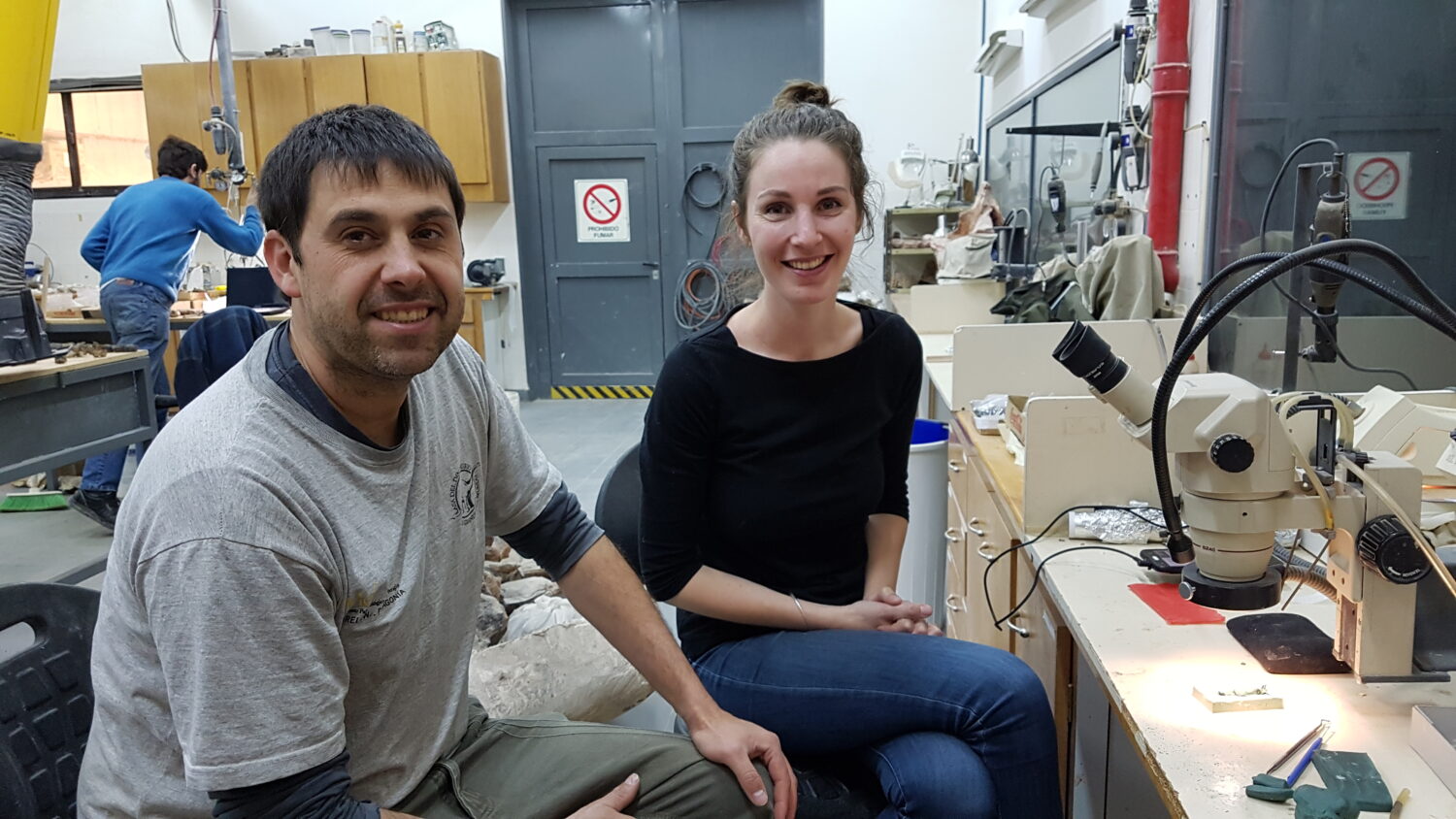Grantee Spotlight
Dorien de Vries is a PhD candidate at Stony Brook University. She was awarded a Leakey Foundation Research Grant in 2018 for her project entitled “Dental topographic evolution in primate and rodent radiations.”

Primates are an incredibly diverse clade, whether we consider their behavior or their physical characteristics. How did their diversity evolve through time? Has primate diversity gradually built over time, or was there waxing and waning in response to other factors in their environment? Is it possible to link patterns in primate diversity to factors such as climate change, competition, or predator abundance?
I am a PhD student at Stony Brook University and am originally from the Netherlands. My dissertation focuses on the diversity of anthropoid primates (the group of primates that includes monkeys, apes, and humans) in Africa and South America through time. I am inspired by biodiversity and how faunal compositions can differ so much between continents. I am fascinated by biological adaptations and how they can differ greatly between closely related species, and vice versa, when unrelated animals exhibit similar biological adaptations due to convergent evolution. Studying these phenomena using fossils opens up a whole other dimension, as you can study how diversity and adaptations came to be and changed through time.
For my PhD research, I am comparing the evolutionary history of anthropoid primates to that of a particular group of rodents: the hystricognaths. These rodents can be distinguished from others by the bone structure of their skulls. The reason for comparing these two groups of mammals is that both groups share major parts of their migratory pathways. Anthropoid primates and hystricognath rodents appear in the African fossil record during the Eocene, and most likely arrived from Asia. They appear in the South American record shortly after that, and DNA of living descendants of these South American groups support an African origin for them. It amazes me to know that the South American capybara is related to the African naked mole rat, both representatives of hystricognath rodents!

Besides these shared factors, the ecology of the two continents differed in some crucial ways. Predation is believed to have been lower in South America, and competition with other primates and rodents was possible in Africa whereas no other primates were present in South America. Since the African and South American continents were both geographically isolated during the Eocene and Oligocene, they have acted as ‘natural laboratories’ in which their evolution took place. The anthropoid primates and hystricognath rodents thus exhibit a fascinating similarity in their migratory histories and lend themselves as excellent case studies for studying how shared and differing ecological factors may have affected the evolution of their diversity.
The goal of my dissertation is to quantify the morphological diversity of anthropoids from the Eocene to the middle Miocene (roughly 40 million years ago to 20 million years ago). I quantify morphological diversity using dental topographic methods, and therefore what I am truly quantifying is the dental diversity of these groups through time.
Since teeth are crucial for the breakdown of foods, my data also tracks dietary adaptations through time. This will provide a wealth of data in relation to climate change and competition, since food sources may change in response to a changing climate, and competition can occur over shared food sources. However, before I can parse out which factors played what role in the evolution of the diversity of our ancestors the early anthropoids, I will compare observed patterns in dental diversity between primates to rodents to examine how two very different mammalian groups responded to shared ecological changes such as climate change.

I am eager to analyze my data to assess whether there is a similar pattern of the waxing and waning of dental diversity in rodents and primates as a response to shared ecological changes, or whether completely different patterns of diversity emerge suggesting that anthropoid diversity relates to factors that were specific to our lineage. Within my anthropoid sample, I will examine whether the evolution of South American anthropoids shows the same patterns as that of African anthropoids. My research thus provides the broader context in which we can assess the origin of monkeys, apes, and humans and ultimately will allow for the identification of distinct pressures and characteristics of the origin of our lineage.


